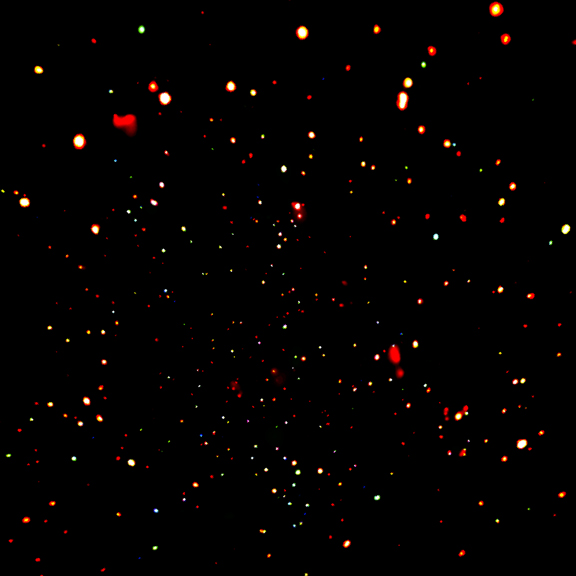
 Credit: NASA/CXC/PSU/D.M.Alexander, F.E.Bauer, W.N.Brandt et al.
Credit: NASA/CXC/PSU/D.M.Alexander, F.E.Bauer, W.N.Brandt et al.
Getting the GOODS on the Universe
Faint objects are interesting: they either represent very bright objects at large distances, or intrinsically dim nearby objects. The availability of large space-based observing platforms can let astronomers explore both these extremes in relatively efficient ways. Deep coordinated observations with the Hubble Space Telescope and the Chandra X-ray Observatory (along with to-be-obtained observations with NASA's next "Great Observatory", the Space Infrared Telescope Facility or SIRTF) have probed to never-before-seen depths in the ocean of night. The image above shows a 23-day exposure on a patch of sky, slightly smaller than the size of the full moon, obtained by Chandra. The image, obtained as part of the Great Observatory Origins Deep Survey (GOODS) program, shows more than 500 X-ray sources, most of which are supermassive black holes located in the centers of galaxies. Comparison of these deep Chandra images with similar visible-band images obtained by Hubble will allow astronomers to sample the population of supermassive black holes in the Universe at a time when the Universe was only about 10 percent its present age.
Last Week *
HEA Dictionary * Archive
* Search HEAPOW
* Education
Each week the HEASARC
brings you new, exciting and beautiful images from X-ray and Gamma ray
astronomy. Check back each week and be sure to check out the HEAPOW archive!
Page Author: Dr. Michael F. Corcoran
Last modified Monday, 26-Feb-2024 17:35:29 EST


